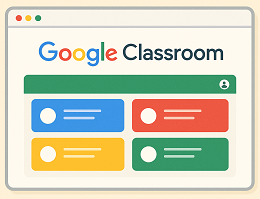The world of education is evolving at a rapid pace, and one of the most exciting advancements in recent years is the integration of AI tools into the classroom. These tools not only help English teachers save time, but they also provide personalized learning experiences for students, making English learning more engaging and effective. Whether you’re looking to streamline lesson planning, provide real-time feedback, or enhance student engagement, AI tools can do it all. Here are the top AI tools every English teacher should know about:
1. ChatGPT is an AI conversational assistant that can help students and teachers with a wide range of tasks, from answering questions to generating lesson ideas and writing prompts. Teachers can use ChatGPT to…
- Create personalized exercises for students at different proficiency levels.
- Simulate real-life conversations to help students practice speaking.
- Generate creative writing prompts, short stories, or poetry for class assignments.
- Quickly clarify complex grammar concepts with easy-to-understand explanations.
Pro Tip: Use ChatGPT for brainstorming activities or simplifying difficult topics for your students. It’s a versatile tool that can be tailored to any lesson plan.
2. Grammarly is an AI-powered writing assistant that helps with grammar, punctuation, and style suggestions. It also provides explanations for each correction. Teachers can use Grammarly to…

- Help students refine their writing by catching common grammatical errors.
- Analyze student essays to pinpoint recurring mistakes in writing.
- Use Grammarly’s explanations to guide grammar lessons in class.
- Encourage students to use the tool for peer reviews and self-editing.
Pro Tip: Incorporate Grammarly’s suggestions into lessons to reinforce grammar rules. It’s a fantastic tool for teaching students the importance of writing mechanics.
3. QuillBot is an AI tool that helps students paraphrase and summarize text. It’s perfect for students who need assistance with rewording sentences or understanding complicated passages. Teachers can use QuillBot to…

- Teach students how to paraphrase effectively to improve their writing and comprehension skills.
- Simplify complex texts to make them more accessible to learners.
- Help students summarize longer texts, making them more manageable for study or review.
Pro Tip: Encourage students to use QuillBot to practice writing in their own words. This can improve both their understanding of texts and their ability to express ideas clearly.
4. Speechify is an AI-powered text-to-speech tool that reads text aloud in a variety of accents and speeds. It can be used to enhance listening skills and support pronunciation practice. Teachers can use Speechify…

- Provide listening exercises by turning reading materials into audio files.
- Help students with pronunciation by allowing them to hear native-like speech.
- Use it to support auditory learners who benefit from hearing the material.
Pro Tip: Use Speechify for audiobooks or reading passages aloud in class. It’s a great way to help students improve their listening comprehension and develop their speaking skills.
5. Kahoot! with AI Integration: Kahoot! is a widely-used tool for creating interactive quizzes, now enhanced with AI-generated question suggestions. It’s a fun way to review English lessons and assess student understanding. Teachers can use Kahoot to…

- Create engaging quizzes on topics like vocabulary, grammar, and reading comprehension.
- Use AI to quickly generate questions, saving time on quiz creation.
- Increase classroom engagement by adding a competitive, game-like element to lessons.
Pro Tip: Try using Kahoot! during class as a quick review tool or at the end of a unit to assess what students have learned. The competitive nature of Kahoot! keeps students motivated.
6. ReadTheory offers personalized reading comprehension exercises. Students are presented with texts at their reading level and are tested on their understanding through follow-up questions. Teachers can use ReadTheory to…

- Assign leveled reading exercises based on each student’s current reading ability.
- Use analytics to track student progress and identify strengths and weaknesses.
- Reinforce critical thinking by incorporating comprehension questions that challenge students.
Pro Tip: Use ReadTheory to build students’ confidence in reading. It’s an excellent tool for English learners of all levels, from beginner to advanced.
7. Edpuzzle with AI: Edpuzzle is a video-based learning platform that allows teachers to create interactive lessons by embedding questions and quizzes within videos. It uses AI to analyze students’ responses and track progress. Teachers can use Edpuzzle…

- Create engaging listening and comprehension activities using videos on YouTube or other platforms.
- Embed grammar or vocabulary questions within videos to reinforce key concepts.
- Analyze student performance through Edpuzzle’s detailed insights and reports.
Pro Tip: Use Edpuzzle for flipped classroom activities, where students watch videos before class and complete interactive questions during class time.
Conclusion
AI tools are revolutionizing the way we teach English, making learning more personalized, efficient, and engaging. By integrating these tools into your lessons, you can provide students with innovative ways to practice their skills, receive instant feedback, and learn at their own pace. Whether you’re refining grammar, helping students with pronunciation, or creating dynamic lesson plans, these AI tools can become invaluable resources in your teaching toolkit. Don’t be afraid to explore and experiment with these technologies to see how they can enhance your English teaching experience.







